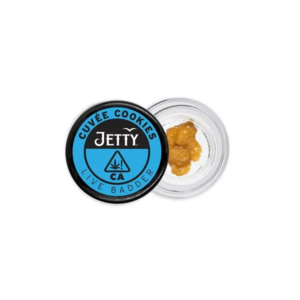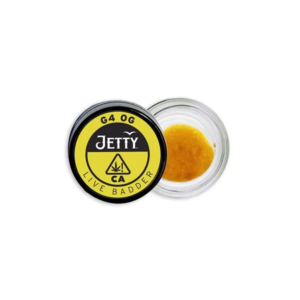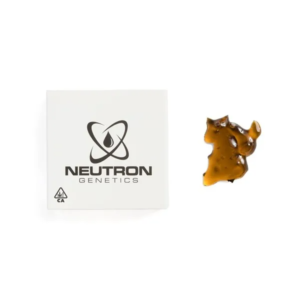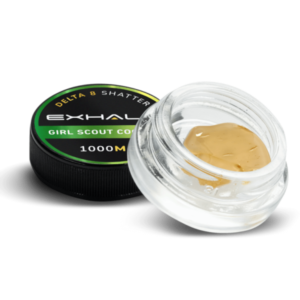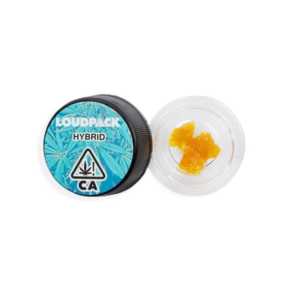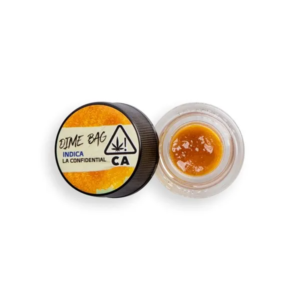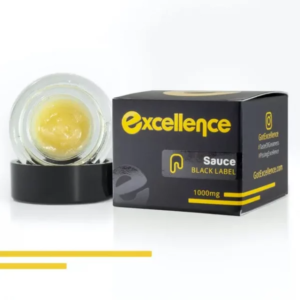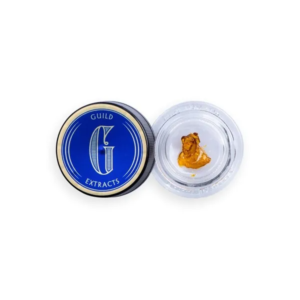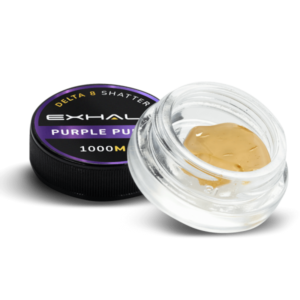The Ultimate Guide to Cannabis Concentrates in the USA: Advantages and Disadvantages Explained
Welcome to the ultimate guide to cannabis concentrates in the USA! From shatter to wax, there are numerous types of concentrates available for consumption. But with so many options, it can be overwhelming to know which one is right for you. In this comprehensive guide, we’ll break down the advantages and disadvantages of various cannabis concentrates, helping you make informed decisions about what’s best for your personal preferences and needs. Let’s dive in and explore the exciting world of cannabis concentrates together!
Introduction to Cannabis Concentrates
Cannabis concentrates, also known as cannabis extracts or just simply “concentrates,” are a rapidly growing segment of the cannabis market in the United States. These products have gained popularity among consumers due to their high potency and unique flavor profiles, making them attractive options for both medicinal and recreational purposes.
But what exactly are cannabis concentrates? In simple terms, they are highly concentrated forms of cannabinoids, such as tetrahydrocannabinol (THC) and cannabidiol (CBD), extracted from the cannabis plant. They come in various forms, including oils, waxes, shatter, budder, live resin, and more.
The extraction process involves using specific techniques to separate these cannabinoids from the plant material through solvents or mechanical methods. The result is a potent product with higher levels of THC or CBD than traditional dried flower products.
Advantages of Cannabis Concentrates
One of the main advantages of cannabis concentrates is their high potency. Since they are highly concentrated forms of cannabinoids, they offer a much stronger effect than traditional smoking methods. This makes them ideal for those seeking quick and powerful relief for medical conditions such as chronic pain or anxiety.
Concentrates also offer a cleaner smoking experience compared to traditional methods due to their minimal processing and lack of additives. This means that users don’t have to inhale any harmful toxins or carcinogens typically found in burned plant material.
Another advantage is that with concentrates comes a variety of consumption options – from vaporizing to dabbing – allowing users to find a method that works best for them. For example, vaping offers a discreet option while still providing an immediate effect without producing smoke or odor.
Additionally, concentrates tend to have more diverse flavor profiles than traditional flower products since they retain more terpenes during the extraction process. Terpenes are natural compounds responsible for the scent and taste profile of different strains; thus offering unique flavors when concentrated.
Disadvantages of Cannabis Concentrates
On the other hand, some potential disadvantages of cannabis concentrates include their high price due to the complex extraction process and limited availability in certain states. This can make them inaccessible for individuals on a tight budget or who live in areas with strict laws around cannabis products.
Moreover, concentrates tend to have higher levels of THC than traditional flower products. While this may be desirable for some users, it can also lead to overconsumption and potentially unwanted side effects such as increased anxiety or paranoia.
While most concentrates are highly potent and pure, there is always a risk of purchasing contaminated or low-quality products from unregulated sources. It is essential to purchase cannabis concentrates from licensed dispensaries where products are tested for potency and purity.
Conclusion
Cannabis concentrates offer many advantages for users seeking potent and diverse consumption options. However, they also come with potential drawbacks that consumers should carefully consider before incorporating them into their routines. As with any cannabis product, it is crucial to educate oneself about the various types of concentrates available to make informed decisions
What are Cannabis Concentrates?
Cannabis concentrates, also known as cannabis extracts, are highly potent forms of marijuana that contain high levels of cannabinoids and terpenes. They are created by separating the trichomes, or resin glands, from the plant material through various extraction methods. These concentrates come in a variety of forms including oils, waxes, shatter, and tinctures.
One of the main advantages of cannabis concentrates is their high potency. These products can have THC levels ranging from 60-90%, compared to traditional marijuana flower which typically contains around 10-25% THC. This means that users can achieve a more intense and immediate effect with smaller doses, making it a cost-effective option for those who need higher levels of THC.
Another advantage is the wide range of options available in terms of consumption methods. Concentrates can be smoked using a dab rig or vaporizer, added to food and beverages for edibles, or even applied topically in the form of lotions or salves for localized pain relief. This versatility makes it easier for users to personalize their consumption experience based on their preferences and needs.
In addition to potency and versatility, concentrates also offer a discreet and convenient option for consuming cannabis. Many people find them more discreet than smoking traditional flowers since they produce less odor when consumed. They are also easy to transport due to their small size and lack of bulky equipment needed.
However, there are also some potential disadvantages associated with cannabis concentrates. One major concern is the lack of regulation around production processes which may result in unsafe products on the market. Consumers need to do thorough research on producers and brands before purchasing any concentrate products.
Moreover, due to their high potency levels, novice users may find it challenging to control their dosage resulting in unintended negative effects such as anxiety or paranoia. It is crucial for individuals using concentrates for the first time to start low and go slow until they become familiar with its effects.
Cannabis concentrates offer a highly potent and versatile option for consuming marijuana. They provide various advantages such as potency, versatility, and discretion, but it is essential to be cautious of potential safety concerns and start with lower doses to avoid adverse effects. As the industry continues to grow and evolve, consumers need to stay informed and make responsible choices when using cannabis concentrates.
Types of Cannabis Concentrates:
Cannabis concentrates have gained popularity in the United States as more states legalize and regulate recreational and medical marijuana. These powerful products are made by extracting the active compounds, including THC or CBD, from the plant material, resulting in a highly concentrated form of cannabis.
There are various types of cannabis concentrates available on the market, each offering unique advantages and disadvantages. In this section, we will explore some of the most popular types of cannabis concentrates and their properties.
1. Hash
Hash (short for hashish) is one of the oldest forms of concentrated cannabis. It is made by collecting trichomes, the resin glands on cannabis plants that contain high levels of cannabinoids, and then compressing them into a solid brick-like mass.
Traditionally produced in countries like Lebanon and Morocco, hash is known for its potent effects due to its high concentrations of THC. It can be smoked or vaporized using a pipe or added to joints for an extra punch.
Advantages: Hash offers a strong psychoactive experience with quick effects that may last up to 4 hours.
Disadvantages: The quality and potency of hash can vary significantly depending on how it was produced. Improperly made hash may contain contaminants that can be harmful when consumed.
2. Wax
Wax is a type of concentrate made through butane extraction or CO2 extraction methods. It has a thick waxy consistency ranging from soft buttery texture to brittle glass-like shards.
Wax usually contains very high amounts of THC, making it popular among experienced users looking for intense effects. It can be added to joints or pipes after heating it in a small amount until it melts into liquid form.
Advantages: Wax delivers immediate effects with intense highs due to its high levels of THC concentration.
Disadvantages: Its production often involves harsh chemicals such as butane which can pose health risks if not properly purged during processing.
3. Shatter
Shatter is a translucent, glass-like concentrate made by using butane to extract cannabinoids and then purging the solvent with heat. It gets its name from its fragile, brittle texture that can easily shatter into pieces.
Similar to wax, shatter is highly potent and commonly contains high levels of THC. It can be smoked or vaporized using a dab rig, which heats up the concentrated cannabis to produce an inhalable vapor.
Advantages: Shatter has a long shelf life, retains its potency over time, and offers quick effects due to high THC concentrations.
Disadvantages: The butane extraction process involved in making shatter poses health risks if not done carefully and with proper equipment.
There are various types of cannabis concentrates available on the market with varying levels of potency and methods for consumption. It is important to choose reputable sources and educate yourself on proper consumption methods to ensure a safe and enjoyable experience.
– Shatter
Shatter is a type of cannabis concentrate that has gained popularity in recent years. It is one of the most potent types of concentrates available on the market, with THC levels reaching up to 90%. Made by extracting cannabinoids and terpenes from the plant using a solvent, such as butane or propane, shatter has a glass-like appearance and breaks into pieces when manipulated. In this section, we will discuss the advantages and disadvantages of using shatter as a form of cannabis concentrate.
Advantages:
1. High Potency: As mentioned earlier, shatter contains high levels of THC, making it a favorite among experienced cannabis users. Due to its concentrated form, only small doses are needed to achieve desired effects.
2. Quick Onset: Shatter is known for its fast-acting effects due to its high concentration level. This makes it an excellent option for individuals looking for immediate relief from pain or other medical symptoms.
3. Versatility: Shatter can be consumed in various ways, including vaporizing, dabbing, or adding it to edibles for a potent kick.
4. Flavorful Experience: When extracted correctly, shatter retains much of the original flavor and aroma profiles of the strain it was made from. This allows users to enjoy their favorite strains in a more concentrated form without compromising taste.
5. Longer Shelf Life: Unlike flower or other forms of cannabis that may lose potency over time, shatter can last for extended periods without losing its potency if stored correctly.
Disadvantages:
1. Risky Extraction Process: The process used to make shatter involves using flammable solvents like butane or propane which can pose safety risks if done improperly by inexperienced individuals.
2. Need for Specialized Equipment: To consume shatter safely and effectively requires specialized equipment like dab rigs or vaporizers specifically designed for concentrates.
3. Higher Tolerance Build-Up: Due to its high potency levels, using shatter frequently can lead to faster tolerance build-up, making it less effective over time.
4. Limited Availability: Shatter is not as readily available as other forms of cannabis concentrate due to the specialized equipment and skill required in its production.
Shatter is a potent and versatile cannabis concentrate that offers benefits such as high potency and quick onset of effects. However, its production process can be dangerous if not done correctly, and it may require specialized equipment for consumption. It’s essential to weigh both the advantages and disadvantages before incorporating shatter into your cannabis routine.
– Wax
Wax is one of the most potent forms of cannabis concentrate available in the United States. It has gained popularity in recent years due to its high THC content and versatility. This section will delve into the advantages and disadvantages of using wax as a cannabis concentrate.
Advantages:
1. High Potency: One of the main advantages of using wax as a cannabis concentrate is its high potency. Most waxes contain anywhere between 60-90% THC, making it one of the strongest forms of cannabis available on the market. This makes it a favorite among experienced users looking for a more intense and longer-lasting high.
2. Quick Onset: Another advantage of wax is its quick onset time. When smoked or vaporized, it takes only a few minutes for the effects to kick in, making it an ideal choice for those seeking fast relief from symptoms such as pain, anxiety or nausea.
3. Versatility: Wax can be consumed in multiple ways, giving users plenty of options depending on their preferences and equipment availability. It can be smoked, dabbed, or added to edibles, providing users with different ways to enjoy their product.
4. Environmentally Friendly Extraction Method: Another advantage worth mentioning is that wax is typically produced through CO2 extraction methods which are considered more environmentally friendly than other extraction processes that may require toxic solvents.
Disadvantages:
1. Unpredictable Dosage: One disadvantage often associated with wax is its unpredictable dosage levels compared to other concentrates such as oils or tinctures. Due to its high potency, even small differences in amounts consumed can lead to significant variations in effects for individual users.
2. Tolerance Build-Up: Regular use of potent concentrates like wax can lead to increased tolerance levels over time meaning that larger quantities may be needed for an individual user to achieve desired effects — possibly leading towards higher expenses spent on products long-term and potentially risking addiction potential while consuming large doses at once
3. Expensive: The process of producing wax is complex and requires specialized equipment, resulting in a higher price point per gram compared to other forms of cannabis. This can make it less accessible for some users who may be on a budget.
4. Production Challenges: The production of high-quality wax requires precise temperature control and expertise, making it more challenging and riskier to produce than other forms of cannabis concentrates.
Wax offers many advantages such as its potency and quick onset time but also has its disadvantages like unpredictable dosages and production challenges. As with any form of cannabis concentrate consumption, individuals need to understand the risks associated with using wax and use caution when deciding on their preferred method of consumption.
– Oil
Oil is a type of cannabis concentrate that has gained immense popularity in recent years. This concentrated form of marijuana is extracted from the plant using various methods such as butane, CO2, or ethanol extraction. It typically contains high levels of cannabinoids and terpenes, making it a potent and highly sought-after product in the cannabis market.
One of the main advantages of cannabis oil is its potency. As opposed to traditional flower buds, which usually have a THC content ranging from 10-25%, oils can contain upwards of 60-90% THC. This makes it a preferred option for those seeking a stronger and more intense high. Additionally, since it is concentrated, only small amounts are needed to achieve the desired effect, making it cost-effective in the long run.
Oil also offers versatility in terms of consumption methods. It can be ingested orally by adding drops to food or drinks, applied topically as part of skin treatments or used in vaporizers for smoking purposes. The variety of consumption options makes oil a convenient choice for users who may not prefer smoking or have dietary restrictions.
Another advantage of cannabis oil is its discreetness compared to smoking traditional marijuana buds. Since there is no combustion involved with oils, there is minimal odor emitted when consumed, thus making it ideal for those who want privacy while consuming their medicine.
Furthermore, due to its potency and purity, oils can offer more precise dosing compared to other forms of marijuana products. Some producers even offer lab-tested labels indicating exact cannabinoid levels and ratios present in their products. This allows consumers to accurately control their intake based on tolerance levels and medical needs.
Despite its advantages, oils do have some potential drawbacks that should be considered before use. One major disadvantage is that most extraction methods involve using solvents like butane or ethanol which may leave residue in the final product if not properly purged off during processing. This can lead to adverse health effects if consumed in large quantities. It is crucial to purchase oils from reputable sources that use safe and clean extraction methods.
Moreover, as with any concentrated product, there is a higher risk of adverse reactions such as anxiety or paranoia for novice users or those with low tolerance levels. Therefore, it is recommended to start with small doses and gradually increase over time while closely monitoring the effects.
Cannabis oil offers many advantages for both recreational and medicinal purposes. Its potency, versatility, discreetness, and precise dosing make it an attractive option for many consumers. However, it is essential to be aware of potential risks associated with its production process and consumption to ensure safe usage of this highly sought-after concentrate.
– Hash
Hash, also known as hashish, is a cannabis concentrate that has been used for centuries. It is made by gathering the trichomes, or resin glands, from the cannabis plant and compressing them into a solid form. This process results in a highly concentrated product that can have varying levels of potency.
One of the main advantages of hash is its high potency. Due to its concentrated nature, it can contain much higher levels of cannabinoids such as THC and CBD than traditional forms of cannabis. This makes it an attractive option for those looking for a stronger and more intense experience.
Another advantage of hash is its versatility. It can be consumed in a variety of ways including smoking, vaporizing, or adding it to food and drinks. This allows users to choose the method that best suits their preferences and needs.
Additionally, hash has a longer shelf life compared to other forms of cannabis due to its low moisture content. This means that it can last longer without losing potency or flavor, making it a cost-effective choice for regular consumers.
On the other hand, one major disadvantage of hash is its potential for contamination during the production process. Trichomes are often collected by hand which can lead to impurities such as dirt and oils being mixed in with the final product. This can result in an unpleasant taste and potential health risks if not properly cleaned.
Furthermore, due to its high potency, hash can also have strong psychoactive effects which may be overwhelming for some users who are not accustomed to such levels of intensity. For this reason, caution should be taken when consuming hash and new users should start with small doses until they understand their tolerance level.
Another drawback of hash is its potentially higher price point compared to other forms of cannabis due to the labor-intensive production process required for high-quality products. This may make it less accessible for some consumers on a budget.
While hash offers many advantages such as high potency and versatility, it also comes with some potential disadvantages such as the risk of contamination and strong psychoactive effects. As with any form of cannabis, it is important to make informed decisions and use responsibly based on individual needs and preferences.
– Dab
Dabbing is a popular method of consuming cannabis concentrates that has gained significant traction in the United States in recent years. It involves inhaling vaporized cannabis concentrate through a specialized device called a dab rig. The term “dab” refers to the tiny amount of concentrated cannabis material, also known as wax, shatter, or budder, that is applied to a heated surface and then inhaled.
There are several advantages to dabbing as a form of cannabis consumption. One major advantage is its potency. Concentrates typically have much higher levels of THC than traditional marijuana flowers, allowing for stronger and more rapid effects. This makes it ideal for patients seeking quick relief from severe pain or other medical conditions.
Additionally, dabbing allows for more precise dosing compared to other methods such as smoking or edibles, making it easier for users to control their intake and avoid accidental overconsumption. This can be especially beneficial for those with lower tolerances or beginners who may not be familiar with appropriate dosages.
Moreover, dabbing can offer a cleaner and smoother experience compared to smoking since there is no combustion involved. The high heat used during dabbing eliminates impurities and toxins that would otherwise be present when burning plant materials. This means that users are less likely to experience negative side effects such as coughing or lung irritation.
On the downside, one disadvantage of dabbing is the potential for tolerance build-up over time due to its high potency. Regular users may find themselves needing larger doses of concentrates to achieve the same effects they used to get with smaller amounts. This can lead to increased costs since concentrates tend to be more expensive than traditional marijuana flowers.
Furthermore, some people may find dabbing intimidating due to the specialized equipment required and potential risks associated with handling blowtorches or hot surfaces while under the influence of THC. Beginners should always educate themselves on proper usage techniques before attempting to use a dab rig on their own.
It is also important to note that dabbing may not be as discreet as other methods of cannabis consumption, as the strong smell of concentrates and the use of specialized equipment can draw attention. This makes it less convenient for those who prefer a low-profile approach to consuming cannabis.
Dabbing has both advantages and disadvantages that should be carefully considered by individuals before incorporating it into their cannabis routine. Its potency, precision, and cleaner experience make it an appealing option for medical patients and recreational users alike. However, tolerance build-up and potential difficulties with equipment handling may present challenges for some users. Understanding the pros and cons of dabbing can help individuals make informed decisions about whether or not it is the right method for them.
– Live Resin
Live resin is a relatively new form of cannabis concentrate that has quickly gained popularity among users in the USA. This unique concentrate is produced by extracting the essential oils and terpenes from freshly harvested, flash-frozen cannabis plants. Unlike other concentrates that are made with dried and cured plant material, live resin captures the raw essence of the plant, resulting in a highly potent and flavorful product.
One of the main advantages of live resin is its high terpene content. Terpenes are organic compounds found in plants that are responsible for their distinct flavors and aromas. In traditional concentrates, these terpenes can be lost during the drying and curing process. However, with live resin, since the terpenes are extracted while the plant is still fresh and frozen, they remain intact and provide a more robust flavor profile. This results in a more full-spectrum effect when compared to other concentrates.
Another advantage of live resin is its potency. Due to its extraction process from flash-frozen plants, it contains higher levels of cannabinoids such as THC and CBD than other concentrates. Therefore, users may experience stronger effects with smaller doses. This potency also makes it an ideal choice for medical marijuana patients who require higher levels of THC or CBD for their treatment.
In addition to its high potency and flavor profile, some users prefer live resin because it does not go through any additional processing steps such as purging or heating which can alter its chemical composition. Hence, this means that the original strain’s characteristics are preserved even after extraction.
However, there are also some potential downsides to using live resin as a cannabis concentrate. One disadvantage could be its price point since it requires special equipment and processes to produce which may make it more expensive than other types of concentrates on the market.
Additionally, due to its high cannabinoid content mentioned earlier, novice users may find it too potent if consumed in large quantities or without careful dosing. Thus, it is recommended that users start with small doses and gradually increase as needed.
Live resin offers a unique and potent experience for cannabis enthusiasts in the USA. Its high terpene content, potency, and preservation of strain characteristics make it an attractive option. However, its price point and potential for strong effects may not make it suitable for everyone. It’s essential to do your research and consult with a professional before trying live resin or any other cannabis concentrate.
Advantages of Using Cannabis Concentrates:
Cannabis concentrates have become increasingly popular among cannabis users in the USA due to their potency and effectiveness. In this section, we will explore the advantages of using cannabis concentrates compared to traditional cannabis products.
1. Potency:
One of the biggest advantages of using cannabis concentrates is their high potency. Concentrates can contain up to 80-90% THC, which is significantly higher than traditional dry herbs that typically have a THC content of around 15-20%. This means that less product is needed to achieve the desired effects, making it more cost-effective for users in the long run.
2. Fast-acting:
Another advantage of using concentrates is their fast-acting nature. When smoked or vaporized, cannabinoids are absorbed into the bloodstream quickly and efficiently, providing almost immediate relief for medical patients or a faster onset of psychoactive effects for recreational users. This makes them an ideal choice for those who need fast and effective relief from pain, anxiety, or other symptoms.
3. Health benefits:
Cannabis concentrates can offer unique health benefits due to their concentrated form and extraction methods. For example, CBD-dominant concentrates may be beneficial for reducing inflammation and alleviating chronic pain without any psychoactive effects. Other concentrates like Rick Simpson Oil (RSO) have been reported to treat conditions such as cancer and epilepsy with promising results.
4. Discreetness:
Concentrates also offer a discreet way of consuming cannabis compared to traditional methods like smoking joints or pipes. With advances in technology, there are various types of vaporizers specifically designed for use with concentrates that produce minimal odor and allow for on-the-go consumption without drawing attention.
5. Versatility:
The versatility of cannabis concentrates is another significant advantage worth mentioning. They can be used in various ways depending on personal preference – through dabbing (vaporizing on a hot surface), adding them to food or drinks, mixing them with flower in joints or blunts, and more. This versatility allows users to customize their cannabis experience and experiment with different consumption methods.
6. Longer shelf life:
When properly stored, concentrates can have a longer shelf life compared to traditional cannabis products like dry herbs. This is because they are less susceptible to mold or bacteria growth due to their concentrated form, making them a more stable option for those who do not consume marijuana frequently.
There are many advantages of using cannabis concentrates that make them an attractive option for individuals seeking potent and fast-acting relief from various conditions or recreational purposes. However, it is essential to keep in mind that these products may not be suitable for everyone and should be consumed responsibly.
– Potency and Effects
Potency and Effects: Understanding the Strength and Impact of Cannabis Concentrates
Cannabis concentrates, also known as “dabs,” have gained significant popularity in recent years for their high potency and strong effects. These concentrates are made by extracting cannabinoids (such as THC or CBD) from the cannabis plant to create a highly concentrated form of the active compounds. As such, they offer a significantly stronger experience than traditional cannabis products like flowers or edibles. In this section, we will dive into the potency levels and effects of cannabis concentrates to help you better understand its advantages and disadvantages.
Potency Levels:
One of the primary reasons why people turn to cannabis concentrates is for their high potency levels. Concentrates can contain anywhere from 50% to over 90% THC compared to only 15-25% in traditional flower products. This means that just a small amount of concentrate can deliver a much stronger effect than consuming larger quantities of dried flowers.
However, it’s important to note that not all concentrates are created equal in terms of potency levels. The strength can vary depending on various factors such as the type of extraction method used, the quality of the starting material, and even how they are stored. It’s crucial to source your concentrates from reputable dispensaries with lab-tested products to ensure accuracy in potency levels.
Effects:
The higher potency levels found in cannabis concentrates result in more potent effects when consumed. For recreational users, this may mean experiencing an intense psychoactive high accompanied by feelings of euphoria and relaxation. On the other hand, medical patients often turn to concentrates for their potent therapeutic potential in managing conditions like chronic pain, anxiety disorders, epilepsy, and more.
One thing worth noting is that due to their concentrated nature, it’s easier to consume too much concentrate at once than with traditional marijuana products. This could lead to unwanted side effects such as anxiety, paranoia, dizziness or even nausea if proper dosage isn’t observed. It’s crucial to start with a small amount and gradually increase your intake if needed.
Disadvantages:
While the increased potency of concentrates is considered an advantage by many, it can also be a disadvantage for some users. For those seeking a milder experience, concentrates can be overwhelming and may cause discomfort or anxiety. Additionally, due to the high THC levels, tolerance can develop faster with regular use, leading to a need for larger quantities for the same desired effect.
Another drawback of concentrates is that they are typically more expensive than traditional cannabis products. This is due to the intensive extraction processes involved and the higher concentration of active compounds in the final product.
Understanding the potency levels and effects of cannabis concentrates is crucial before trying them to ensure a safe and positive experience. As always, it’s essential to consume responsibly and purchase from reputable sources to enjoy all the benefits that these highly potent products have to offer.
– Convenience and Portability
Convenience and Portability: A Key Factor in the Popularity of Cannabis Concentrates
In recent years, cannabis concentrates have taken the marijuana market by storm, quickly becoming one of the most sought-after products among both medicinal and recreational users. And one of the main reasons for this surge in popularity is convenience and portability.
Unlike traditional methods of consuming cannabis, such as smoking dried flower or using edibles, concentrates offer a highly portable and discreet option for on-the-go use. This is because concentrates are typically packaged in small, easy-to-carry containers like syringes or glass jars, making them ideal for travel or discreet consumption.
Additionally, since concentrates are highly potent and concentrated forms of cannabis, they require much smaller amounts to achieve the desired effects compared to other methods. This means that users can carry around less product while still getting the same benefits. For example, instead of carrying around bulky bags of dried flower or multiple edibles for a weekend trip, a small container of concentrate can suffice.
Moreover, concentrates also offer incredible convenience when it comes to dosing. With other forms of cannabis consumption like smoking or vaping dried flower, it can be challenging to accurately measure out doses and ensure consistent potency each time. On the other hand, concentrates come with precise measurements on their packaging, allowing users to easily control their intake and personalize their experiences according to their needs.
In addition to being convenient for personal use, concentrates are also gaining popularity among medical patients due to their portability advantage. Many patients who rely on daily medication may find it difficult to constantly roll joints or prepare edibles every day; however, with concentrates they can have a pre-measured dose already prepared that they can easily take with them wherever they go.
Another aspect that adds value to the convenience factor is how easy it is to incorporate concentrates into food items for cooking and baking at home. This makes homemade medicated treats more accessible than ever before, as users can simply add a small amount of their desired concentrate to any recipe.
However, one drawback to the convenience and portability of concentrates is the potential for misuse. Since concentrates are potent and highly concentrated forms of cannabis, it is crucial for users to practice responsible consumption and only take the recommended dosages. Additionally, it’s essential to keep concentrates out of reach of children and pets due to their high potency.
Convenience and portability are major factors contributing to the growing popularity of cannabis concentrates. With their ease of use, precise dosing capabilities, and versatility in consumption methods, there’s no denying that concentrates offer a convenient and portable option for those looking to incorporate cannabis into their daily routines. However, like with any cannabis product, responsibility and caution should always be exercised when using concentrates.
– Medical Benefits
The use of cannabis concentrates has gained popularity in recent years, especially in states where recreational marijuana is legal. These potent forms of cannabis come with a range of medical benefits that have been praised by many users. In this section, we will explore the various medical benefits of cannabis concentrates and how they can improve your overall well-being.
1. Pain Relief:
One of the most significant advantages of using cannabis concentrates for medicinal purposes is its ability to provide pain relief. The high concentration of cannabinoids, such as THC and CBD, in these products makes them effective in treating chronic pain from conditions like arthritis, fibromyalgia, migraine headaches, and more. They work by interacting with the body’s endocannabinoid system to reduce inflammation and alleviate pain.
2. Improved Mental Health:
Another benefit of using cannabis concentrates is their potential to improve mental health conditions such as anxiety and depression. Studies have shown that THC can act as an antidepressant by increasing serotonin levels in the brain. CBD also has anti-anxiety properties and can help regulate mood disorders.
3. Nausea and Appetite Stimulation:
Cannabis concentrates are also known for their ability to relieve nausea and stimulate appetite. This makes them beneficial for individuals undergoing chemotherapy or those suffering from eating disorders like anorexia nervosa.
4 . Seizure Control:
In recent years, there has been a surge in interest regarding the use of cannabis concentrates for seizure control. It is believed that the cannabinoids found in these products have anticonvulsant properties that can help reduce seizure frequency in individuals with epilepsy.
5 . Neuroprotective Properties:
CBD-rich concentrates have shown promise in protecting nerve cells from damage, making them potentially beneficial for individuals with neurodegenerative diseases like Alzheimer’s or Parkinson’s.
6 . Cancer Treatment Support:
While further research is still needed on this topic, some studies suggest that certain compounds found in cannabis concentrate may play a role in inhibiting the growth and spread of cancer cells. Additionally, these products can aid in managing treatment side effects such as pain, nausea, and loss of appetite in cancer patients.
Cannabis concentrates offer a wide range of potential medical benefits that can improve the quality of life for many individuals. However, it is essential to note that these claims are still being studied, and more research is needed to fully understand their effectiveness. As with any medication or health supplement, it is crucial to consult with a healthcare professional before incorporating cannabis concentrates into your medical regimen.
Disadvantages of Using Cannabis Concentrates:
Cannabis concentrates have gained popularity in recent years due to their potency and convenience. However, like any other substance, there are also disadvantages to using cannabis concentrates that should be considered before incorporating them into your routine.
One of the main disadvantages of using cannabis concentrates is the potential for adverse reactions and negative side effects. The high concentration of THC (the psychoactive compound in cannabis) in concentrates can lead to intense highs that may cause anxiety, paranoia, and even hallucinations in some users. Since cannabis concentrates are typically much stronger than traditional forms of marijuana, it can be easy for users to consume too much and experience unpleasant symptoms.
Another drawback of cannabis concentrates is their impact on lung health. Many concentrate products require heating or vaporization techniques that might expose users to harmful chemicals and irritants. This can be especially problematic for those with pre-existing lung conditions or sensitive respiratory systems.
In addition, the production processes involved with creating some types of cannabis concentrates can pose potential risks. Extraction methods using solvents such as butane or propane can result in dangerous explosions if not performed correctly by trained professionals. These accidents have been reported within the industry and highlight the need for consumers to carefully consider where they are sourcing their concentrate products from.
Furthermore, the high potency of cannabis concentrates can also make it more challenging for individuals to control their dosage accurately. While traditional marijuana products come with a relatively predictable level of THC per dose, concentrates vary significantly in strength depending on factors like extraction method and strain used. Without proper knowledge or experience consuming these potent products, it is possible to accidentally consume more than intended.
Obtaining concentrate products legally can also present difficulties depending on one’s location within the United States. Currently, only a few states have legalized recreational use of marijuana and allow retail sales of concentrates without a medical card. This means that access may be limited for interested individuals living outside these select areas.
While there are certainly advantages to using cannabis concentrates, there are also several disadvantages that should not be overlooked. It is crucial that individuals considering incorporating these products into their routine do their research and proceed with caution to ensure a safe and positive experience.
– Cost
Cost is always a crucial factor to consider when exploring different types of cannabis concentrates in the USA. Concentrates are generally more expensive than traditional flower or dried herb products due to their intricate production processes, high potency levels, and limited availability in many states. In this section, we will delve into the cost aspects of cannabis concentrates, including their advantages and disadvantages.
Advantages:
1. Potency: One of the main advantages of cannabis concentrates is their high potency levels. This means that a small amount can go a long way compared to traditional products, making them more cost-effective in the long run.
2. Reduced Frequency of Consumption: Due to their high potency, users do not need to consume as frequently as they would with traditional products. This results in lower overall costs for those who use cannabis frequently.
3. Efficient Extraction Methods: Many concentrate producers use advanced extraction methods such as CO2 or butane hash oil (BHO) extraction which allows them to extract large quantities from smaller amounts of plant material. This efficiency leads to lower production costs and hence lower prices for consumers.
4. Versatility: Cannabis concentrates offer a variety of consumption methods such as dabbing, vaporizing, and edibles which can cater to different budgets and preferences. For example, dabbing using a rig can be an expensive method due to equipment costs, but vaporizing using a pen-style device can be more affordable.
Disadvantages:
1. Production Costs: The production process for cannabis concentrates is complex and time-consuming which translates into higher costs for producers that are ultimately passed on to consumers.
2. Limited Availability: While 33 states have legalized medical marijuana in some form and 11 states have legalized recreational use in the US, not all allow the production and sale of cannabis concentrates yet. This makes them less accessible compared to traditional products in some areas where they may only be available through illegal channels at inflated prices.
3. Equipment Costs: As mentioned before, consuming some types of concentrates such as by dabbing require specialized equipment. While this may be a one-time cost for some, it can still add to the overall expense.
Cannabis concentrates offer many advantages in terms of potency, efficient extraction methods, and versatility. However, they also come with certain disadvantages such as production costs and limited availability. It is important for consumers to consider these factors while budgeting for and purchasing their preferred cannabis concentrate products.
– Potential Health Risks (l
In recent years, the use of cannabis concentrates, also known as “dabs,” has been on the rise in the United States. These highly potent forms of cannabis offer a faster and more intense high than traditional marijuana flower, making them popular amongst recreational users. However, there are some potential health risks associated with using concentrates that should be carefully considered.
One of the main concerns with using cannabis concentrates is their high THC levels. While traditional marijuana flower typically contains anywhere from 10-25% THC (the psychoactive compound in cannabis), concentrates can contain up to 80% or even higher levels of THC. This means that users are consuming significantly more THC in a single dab than they would with smoking or ingesting flower. As such, there is an increased risk for potential adverse effects such as anxiety, paranoia, panic attacks, and even psychotic episodes.
Another potential health risk associated with cannabis concentrates is the method of consumption. Dabbing involves heating a concentrated form of cannabis on a hot surface and inhaling the resulting vapor. This process can be dangerous if not done properly and can result in burns or other injuries if precautions are not taken. Additionally, dabs are often taken at higher temperatures than smoking flower, which can irritate the throat and lungs leading to coughing or respiratory issues.
Furthermore, because concentrates are more potent than traditional marijuana flower, it’s easier for individuals to consume too much without realizing it. This can lead to overconsumption and an overwhelming high that could potentially lead to nausea, vomiting, disorientation, or loss of consciousness.
It’s also important to note that due to federal regulations and lack of oversight in the production process, some concentrates may contain harmful additives or contaminants such as pesticides or solvents used during extraction. This can pose serious health risks if consumed regularly or in large quantities.
While research on the long-term effects of dabbing is still limited due to its relative novelty, there is some evidence that frequent and heavy use of concentrates may have negative consequences on cognitive function and brain development, especially in adolescents. It’s crucial to consider these potential long-term effects before incorporating cannabis concentrates into one’s routine.
While cannabis concentrates offer several advantages, including faster onset and stronger potency, users should be aware of the potential health risks associated with their use. It’s essential to consume responsibly and in moderation and to always prioritize safety when handling dabs. As with any substance, understanding the potential risks and making informed decisions can help ensure a positive experience when using cannabis concentrates.
Cannabis Concentrates
Cannabis Concentrates
Cannabis Concentrates
Cannabis Concentrates

